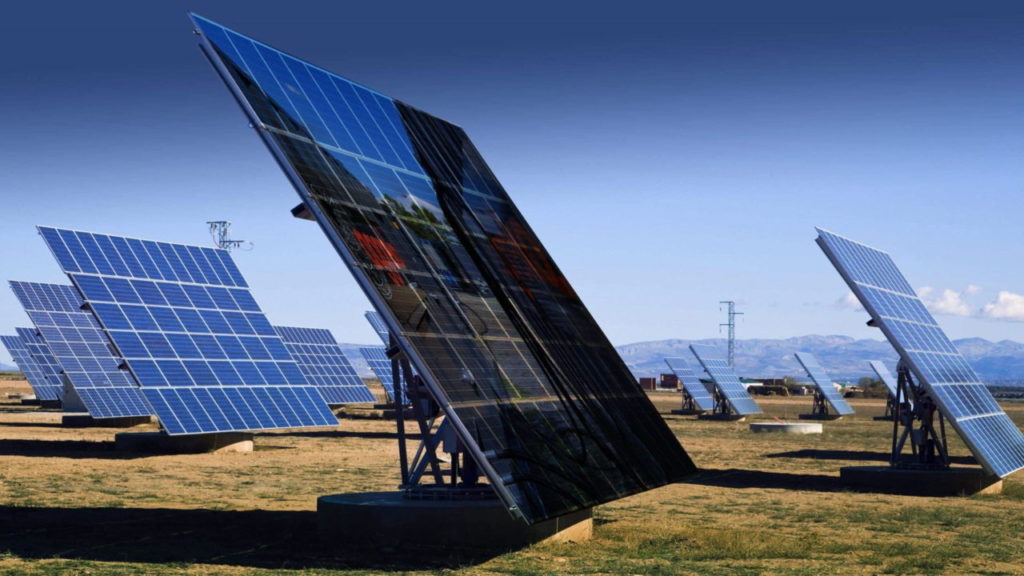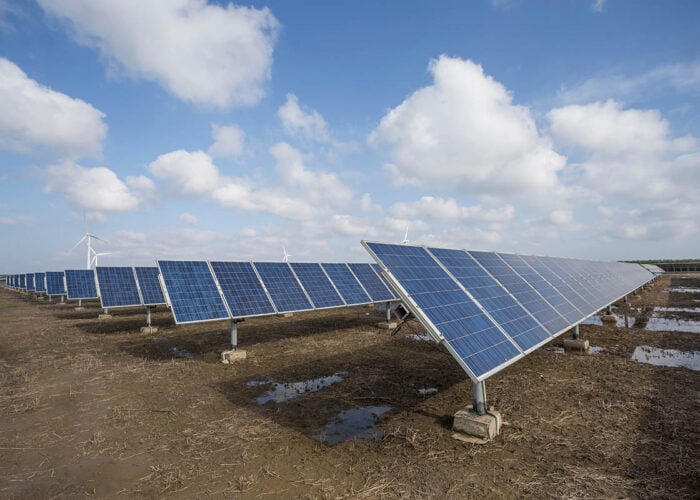
An initiative to help optimise the use of farmland by integrating community solar projects where suitable is helping to steer hostile local stakeholders towards supporting renewables, one of the programme leaders has told PV Tech Premium.
In spring this year, energy services provider Aggreko announced its partnership with US-focused Farmers Powering Communities on its community solar initiative. This was launched last year by social impact solar developer Edelen Renewables. farmland preservation organisation American Farmland Trust and community solar subscriber Arcadia.
Unlock unlimited access for 12 whole months of distinctive global analysis
Photovoltaics International is now included.
- Regular insight and analysis of the industry’s biggest developments
- In-depth interviews with the industry’s leading figures
- Unlimited digital access to the PV Tech Power journal catalogue
- Unlimited digital access to the Photovoltaics International journal catalogue
- Access to more than 1,000 technical papers
- Discounts on Solar Media’s portfolio of events, in-person and virtual
The headline number is the goal of 500MW of community solar projects over five years in line with American Farmland Trust’s mission of preserving farmland across the US, for which it has created principles for sustainable solar development known as “smart solar”.
These principles include screening tools and proprietary databases to evaluate land across the US for its viability for farming, Jerry Polacek, president, Aggreko Energy Transition Solutions (Aggreko ETS), told PV Tech Premium. The focus is then on selecting land that is not prime farming land or that is suitable for dual use, integrating solar PV installations together with agriculture. Such agrivoltaics are designed to sustain agricultural production underneath solar panels or between rows of modules throughout the life of the project.
“American Farmland Trust has several offices across the US and they’re tied into local communities,” said Polacek. “So we really see the benefit and value in driving the initiative across multiple states in the US.”
While avoiding interference of pristine farmland, wherever it makes sense in terms of the local conditions for farming, agrivoltaics will be the preferred approach, added Polacek. In other cases, the Trust has access to swathes of land that is not being used optimally and has little agricultural potential so this land could be used for standalone, non-integrated solar projects.
Suitable states for community Solar
In the US, community solar is driven by state-led programmes focusing on projects of between 1-5MW capacity. This means that the farmers power initiative is targeting sites that typically range between 10-20 hectares in size and that are close to grid infrastructure.
“New York has a very robust and supportive community solar programme, so we have a good pipeline of projects there,” said Polacek. “American Farmland Trust over decades has established very strong ties to the farming community and so just recently, we’ve completed a webinar in New York State that is targeting farmers and landowners that, based on our research, have sites that are suitable for development under the Farmers Powering Communities framework.”
When asked what differentiates this initiative from other community and agrivoltaic solar ventures, Polacek said that American Farmland Trust is in the field talking to farmers and ranchers every day, which adds credibility to the initiative and builds trust with those landowners. The trust also has a proprietary database developed over many years to evaluate the quality of the land on which to develop such projects.
“We are also active in Illinois and are close to closing on a few projects there,” added Polacek. “Again, the states that we’re in are a reflection of those states being supportive of community solar and having good policies that support these programmes.”
Access to low-income communities
The off-takers of the power produced from these PV projects will depend on the location and needs to align with the objectives of the given state community solar programme. Typically, community solar projects allow both individuals as well as organisations and corporations to participate.
“On an individual level, the idea of community solar is expanding access to clean energy,” said Polacek. “So, if you’re living in an apartment building, if you’re living on in a house that doesn’t lend itself to rooftop solar, the idea is to site one of these larger scale 1-5MW projects where more people have access.
“In many states, the programmes also encourage access to low- and moderate-income communities and that will obviously be a feature of what we’re doing here as well. The idea is that these projects are offering economic energy as well as clean energy to the community, so the subscription agreements with the customers are typically priced at a discount to the power that they would otherwise be receiving from the utility.”
The rise of agrivoltaics and its trade-offs
As solar comes more to the mainstream with clear benefits to many communities, it also becomes clear that many stakeholders currently do not favour renewable energy, therefore building support with communities for PV development is critical, said Polacek. Demonstrating that solar projects will benefit local agricultural communities and that land use will be respected resonates with local stakeholders.
“In Agrivoltaics, there are trade-offs, so as you’re developing a project, you have to evaluate that, in many instances, the designs to accommodate livestock grazing could represent increased costs of development in terms of the racking heights and other aspects that have to be accounted for,” added Polacek. “It requires additional project management to coordinate the farming and the grazing along with the solar operations. So it is a more complicated project management, but the payoffs to both the communities and ultimately to all of the stakeholders make it worth it.”
Aggreko’s role
Aggreko has traditionally focused on mobile module power, temperature control and air energy storage solutions, but Aggreko ETS was formed last year to help accelerate the company’s investment into the energy transition by developing, owning and operating clean energy projects including solar, battery storage and hybrid projects across North America.
Aggreko ETS will not just bring capital to the project but will also act as a strategic partner with its expertise as an independent power producer in electrical engineering and land management, said Polacek.
“Our role is very much involved directly with acquiring the sites for development, developing them and screening them for feasibility, making sure that they meet the requirements of the farmers powering community initiative,” he added.
Every partner is bringing a different expertise to the table, but it was the presence of American Farmland Trust which most attracted Aggreko.
When the Farmers Powering Communities scheme was first announced last year, John Piotti, American Farmland Trust president and CEO, said: “Farmers are on the frontlines of climate change, experiencing extreme weather events that impact their crops, livestock and livelihoods. We also know that farms can be part of the solution to the climate crisis. Farmland can draw carbon from the air to rebuild soil when farmed using climate-smart practices like cover crops and reduced tillage. We need to dramatically ramp up solar energy production while retaining our farms and ranches. That’s what this partnership is all about. Doing solar the right way and putting it in the right place is what we call Smart Solar.”







